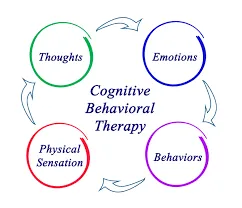Suicide Warning Signs & Prevention
.webp)
By Justine Mahler, M.S., Jennifer Shalam, B.A., and Jack Hanson, B.M.
In recent years, rates of suicide across the national and worldwide scale have rocketed. As one of the leading causes of death, more than 720,000 people die from suicide worldwide. In the United States, suicide is the fourth leading cause of death in 15- to 24- year olds, and a high risk in men over the age of 65. Men, in general, are more likely to die by suicide than women, due to societal expectations that discourage them from seeking help, and the tendency to use more lethal methods. While this is certainly a public health emergency, suicide is preventable with evidence-based, low-cost interventions. Now more than ever, it is important for everyone to learn the warning signs of suicide and understand how to respond during a crisis for a loved one.
Some of the most common warning signs for people at risk of suicide include:
- Talking about or making plans for suicide
- Expressing hopelessness
- Talking about being a burden to others
- Changes in sleep (sleeping too little or too much)
- Increased anger and hostility
- Mood changes
- Increased use of drugs and alcohol
- Withdrawing from social activities or isolating oneself
It’s important to keep in mind that certain age groups are at greater risk for suicide than others. For instance, older adults, particularly men over the age of 65, are more at risk for suicide due to underdiagnosed or overlooked depression. This can be exacerbated by various factors, such as the trauma of losing a spouse, family members, or friends, living with chronic illness, financial difficulties, and the perceived loss of purpose or identity after retirement. The sense of isolation and loneliness that many older adults experience due to the death of peers or physical limitations can also contribute to suicidal thoughts.
Younger people, especially those in the 15-24 age group, have also seen an alarming increase in suicide rates. This may be attributed to the developmental changes that occur in adolescence and early adulthood, such as identity formation and emotional regulation, as well as a lack of meaningful social connections. The rise of social isolation due to technology and social media, alongside the pressures of bullying, academic stress, and identity challenges, can further increase their vulnerability. In addition, young people may face heightened pressure to succeed, both academically and socially, which is often dismissed as typical adolescent mood swings but should perhaps be taken more seriously.
When warning signs of suicide are present in any age group, it’s important to be able to recognize when to call for help, particularly if you are in a crisis. If you are in an imminent crisis, please call 911 or drive to your local emergency room for help. Otherwise, calling or texting 988 will link you to a crisis counselor who will be able to guide you through the crisis. In addition, creating a safety plan is a proactive way to navigate a crisis. Safety planning is one of the most effective methods for preventing suicide, and consists of: identifying early warning signs, developing coping mechanisms to manage distress, finding healthy distractions to reorient the mind, relying on a support network of trusted individuals, creating a list of mental health professionals who can offer help during a crisis, and creating a safer environment by removing access to harmful means or triggers. It is important to regularly update a safety plan to reflect changes in mental health or life circumstances. With these tools, you, or your loved ones, can better protect yourselves while reaching out for help. Taking these steps empowers you to manage crisis situations safely and effectively. Additionally, educating family and friends about your safety plan can enhance your support system and allow others to assist in keeping you safe.
Centers for Disease Control and Prevention. (2018, July 18). Suicide Data and Statistics.
Centers for Disease Control and Prevention. https://www.cdc.gov/suicide/facts/data.html
Suicide and Suicidal Behavior. SAMHSA. (2023, April 24).
More Blog Posts

Enjoying the Flowers
.webp)
Sleep Troubles or Sleep Disorder

Finding Comfort in the Moment: The DBT Self-Soothe Skill

You can experience life again. Let’s take steps together.
At Bio Behavioral Institute, we’re here to be your team and get you back to the life you deserve. Schedule your consultation and take the first step towards a more meaningful life.
Call our office at 516-487-7116 or complete the form to schedule your consultation.
